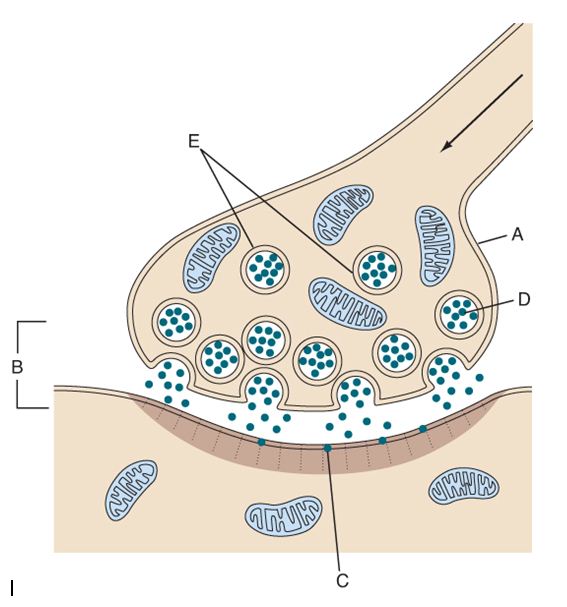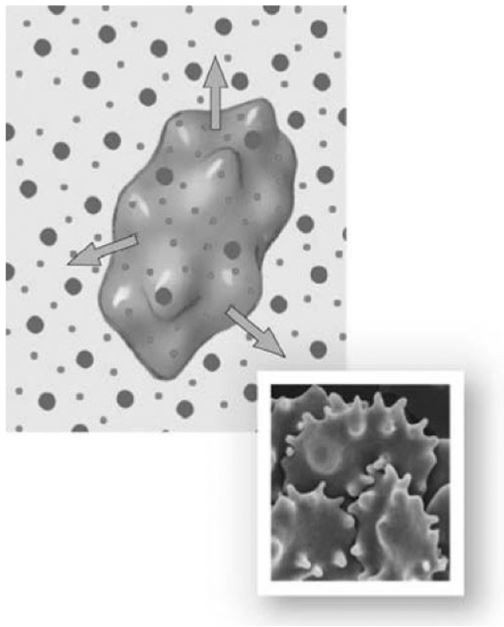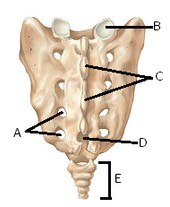Identify the following

A. End bouton
B. Synapse
C. Postsynaptic ion channels
D. Neurotransmitter
E. Synaptic vesicles
You might also like to view...
 Choose the correct description for the preceding image
Choose the correct description for the preceding image
A) The cell is in a hypotonic saline solution. B) Osmotic flow does not occur across the plasma membrane of the cell. C) As the current condition of the cell continues, its plasma membrane may rupture or lyse. D) The cell is in equilibrium with the solution in that as one water molecule moves out of the cell, another moves in to replace it. E) As water moves out of the cell, crenation occurs.
Why does peritonitis, inflammation of the peritoneal membrane, affect multiple digestive organs?
a) The peritoneal membrane surrounds many abdominal organs, so inflammation of the membrane will affect multiple organs rapidly. b) The peritoneal membrane surrounds the accessory organs of the digestive system so inflammation of the membrane will rapidly affect all the other abdominal organs. c) The peritoneal membrane does not surround the accessory organs of the digestive system and so inflammation of the membrane will spread to these organs rapidly. d) The peritoneal membrane surrounds the stomach only, so inflammation of the membrane will affect those not protected by it.
 The figure illustrates the sacrum. What structure does "D" represent?
The figure illustrates the sacrum. What structure does "D" represent?
A. Posterior sacral foramina B. Coccyx C. Median sacral crest D. Superior articular facet E. Sacral hiatus
Discuss the role of hormones in maintaining blood calcium levels
What will be an ideal response?